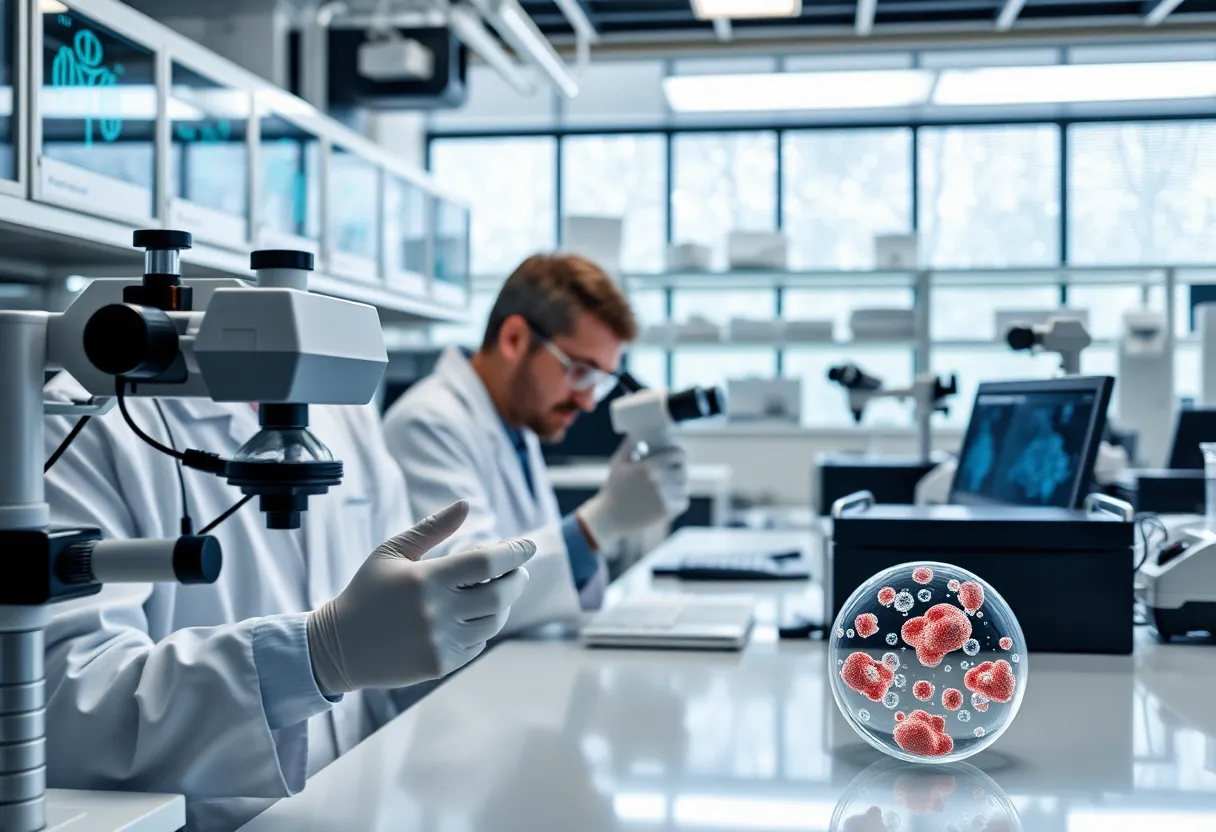Buffalo, NY, October 14, 2025
A biophysicist at the University at Buffalo has received a $2.1 million NIH grant to study protein-RNA droplets. This project aims to unlock new insights into diseases affecting the brain and nervous system, emphasizing collaboration with local hospitals and a focus on innovative therapies.
Buffalo, NY College and University News: UB Biophysicist Secures Major NIH Grant for Groundbreaking Research
BUFFALO, NY – A biophysicist at the University at Buffalo has received a substantial $2.1 million grant from the National Institutes of Health to explore the inner workings of protein-RNA droplets, tiny structures inside cells that play a vital role in how our bodies function. This news, announced on October 14, 2025, marks a significant boost for research efforts at SUNY Buffalo, focusing on areas that could unlock new insights into diseases affecting the brain and nervous system.
The funding will support a five-year project led by Dr. Elena Vasquez, an associate professor in the Department of Physics at UB. These protein-RNA droplets act like little compartments within cells, helping to organize and protect important molecules. By studying them, the research aims to reveal how they contribute to normal cellular processes and what goes wrong when they malfunction, potentially leading to conditions like Alzheimer’s or other neurodegenerative disorders. At the heart of the project is the use of cutting-edge imaging tools available in UB’s state-of-the-art laboratories. These tools will allow scientists to create detailed models of how the droplets form, move, and interact, providing a clearer picture of their behavior under different conditions.
Project Details and Expected Outcomes
The core of this initiative involves advanced techniques to visualize and simulate the dynamics of protein-RNA droplets. Researchers plan to examine how these droplets respond to various environmental factors within the cell, such as changes in temperature or chemical signals. This hands-on approach is expected to generate data that not only deepens scientific understanding but also paves the way for practical applications in medicine. For instance, insights from the study could help develop targeted therapies that prevent droplet-related malfunctions, offering hope for better treatments for complex diseases.
Dr. Vasquez’s work emphasizes collaboration beyond the university walls. Plans include partnering with local hospitals in the Buffalo area to bridge the gap between lab discoveries and real-world patient care. These partnerships will focus on translating research findings into clinical trials or diagnostic tools, ensuring that the benefits of this science reach those who need it most. The grant’s structure allows for a multidisciplinary team, drawing in experts from biology, chemistry, and engineering to tackle the project’s challenges from multiple angles.
Broader Impact on Buffalo’s Research Landscape
This achievement underscores the growing prominence of Western New York as a hub for biomedical innovation. The NIH grant aligns with a larger national effort to advance structural biology, the field that maps out the building blocks of life at a molecular level. UB’s involvement positions the university as a leader in this domain, attracting additional resources and recognition to the region. For the local academic community, the funding serves as an inspiration for students and early-career scientists, encouraging them to pursue ambitious projects in cutting-edge science.
The influx of such investments is helping to build a robust research ecosystem in Buffalo. Universities like UB are drawing top talent from across the country, fostering an environment where innovation thrives. This not only elevates the profile of SUNY institutions but also stimulates economic growth through job creation in research and related fields. As the project unfolds over the next five years, updates on progress could further highlight Buffalo’s contributions to national health research priorities.
Background on the Research and Its Significance
Protein-RNA droplets have emerged as a hot topic in biology because of their role in regulating gene expression and maintaining cellular health. Disruptions in these structures have been linked to several serious conditions, making them a prime target for investigation. Dr. Vasquez’s expertise in biophysics, which combines principles of physics with biological systems, makes her uniquely suited to lead this effort. Her previous work at UB has laid the groundwork for this deeper dive, building on foundational studies that first identified the importance of these droplets.
The $2.1 million NIH grant reflects confidence in UB’s capabilities and the potential impact of the research. It comes at a time when federal funding for science is increasingly focused on projects with clear paths to improving public health. For Buffalo, this means more opportunities to address regional health challenges through science-driven solutions. As the team advances, the project could inspire similar initiatives at other local institutions, strengthening the area’s reputation in biomedical fields.
In summary, this grant represents a pivotal moment for UB and the broader Buffalo research community. By shedding light on protein-RNA droplets, the work promises to contribute valuable knowledge to the fight against neurodegenerative diseases, all while reinforcing the region’s status as an emerging center for scientific excellence.
FAQ
What is the main focus of Dr. Elena Vasquez’s research project?
The project investigates protein-RNA droplets, crucial for understanding cellular functions and potential disease mechanisms.
How much funding did Dr. Elena Vasquez receive, and from where?
Dr. Elena Vasquez secured a $2.1 million NIH grant.
How long will the research project last?
The five-year project will utilize advanced imaging at UB’s labs to model droplet behaviors.
What is the goal of the research in terms of health applications?
Aiming for breakthroughs in neurodegenerative research.
What role does Dr. Elena Vasquez hold at UB?
Dr. Elena Vasquez is an associate professor at SUNY Buffalo.
How does this grant impact Buffalo’s research scene?
The grant’s importance in elevating Buffalo’s role in national biomedical innovation.
Are there any planned collaborations for this project?
Collaborations with local hospitals are planned to translate findings into clinical applications.
What broader NIH initiative does this funding support?
This funding, part of a broader NIH push for structural biology.
How does UB benefit from this grant overall?
Positions UB as a key player in Western New York’s growing research ecosystem, inspiring students and attracting top talent to the region.
Key Features of the Research Project
| Feature | Description |
|---|---|
| Funding Amount | $2.1 million NIH grant |
| Project Duration | Five years |
| Lead Researcher | Dr. Elena Vasquez, associate professor at SUNY Buffalo |
| Focus Area | Protein-RNA droplets and their role in cellular functions and disease mechanisms |
| Methodology | Advanced imaging at UB’s labs to model droplet behaviors |
| Potential Impact | Breakthroughs in neurodegenerative research |
| Collaborations | With local hospitals for clinical applications |
| Broader Context | Part of NIH push for structural biology; elevates Buffalo’s biomedical innovation |




